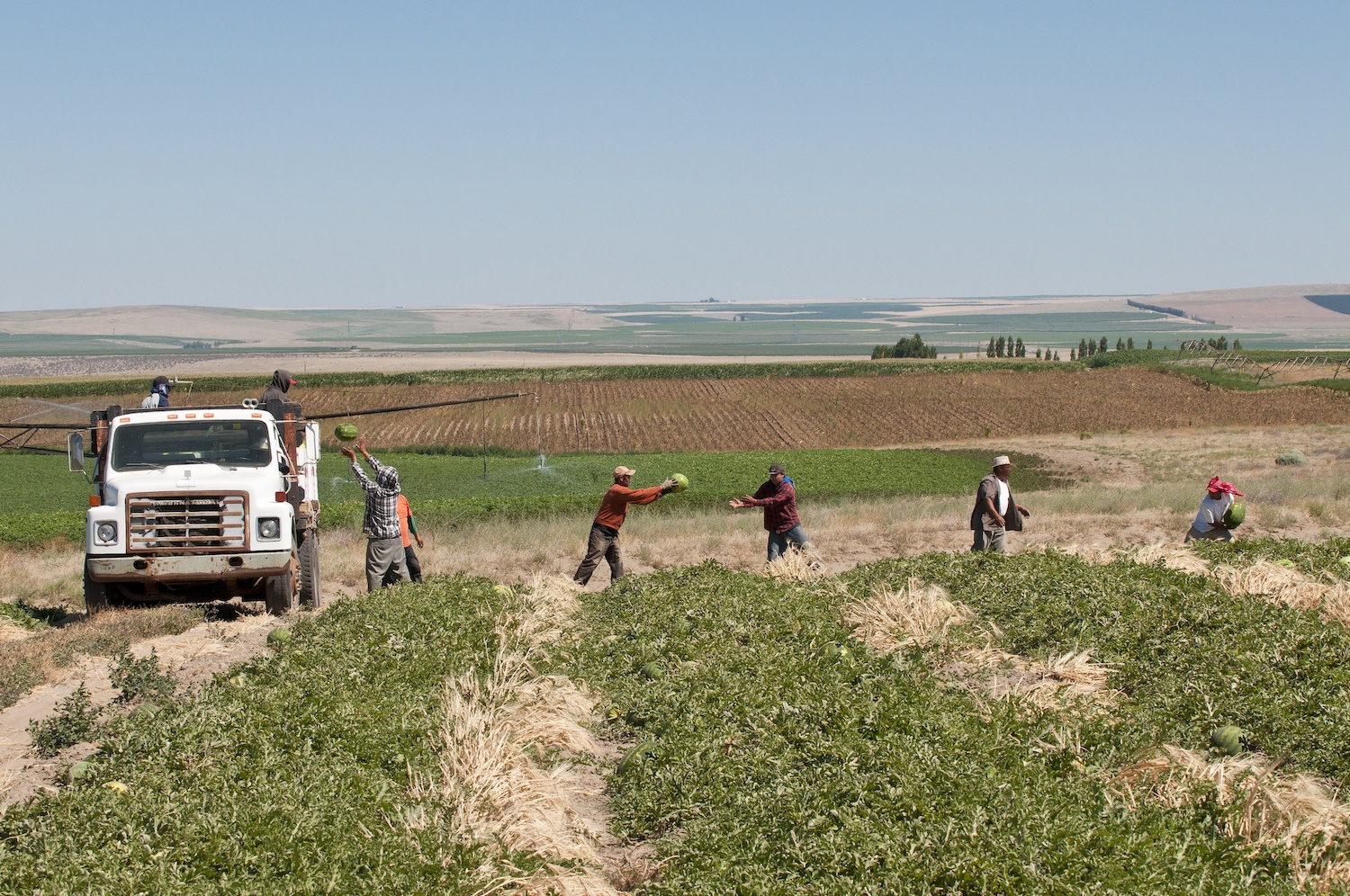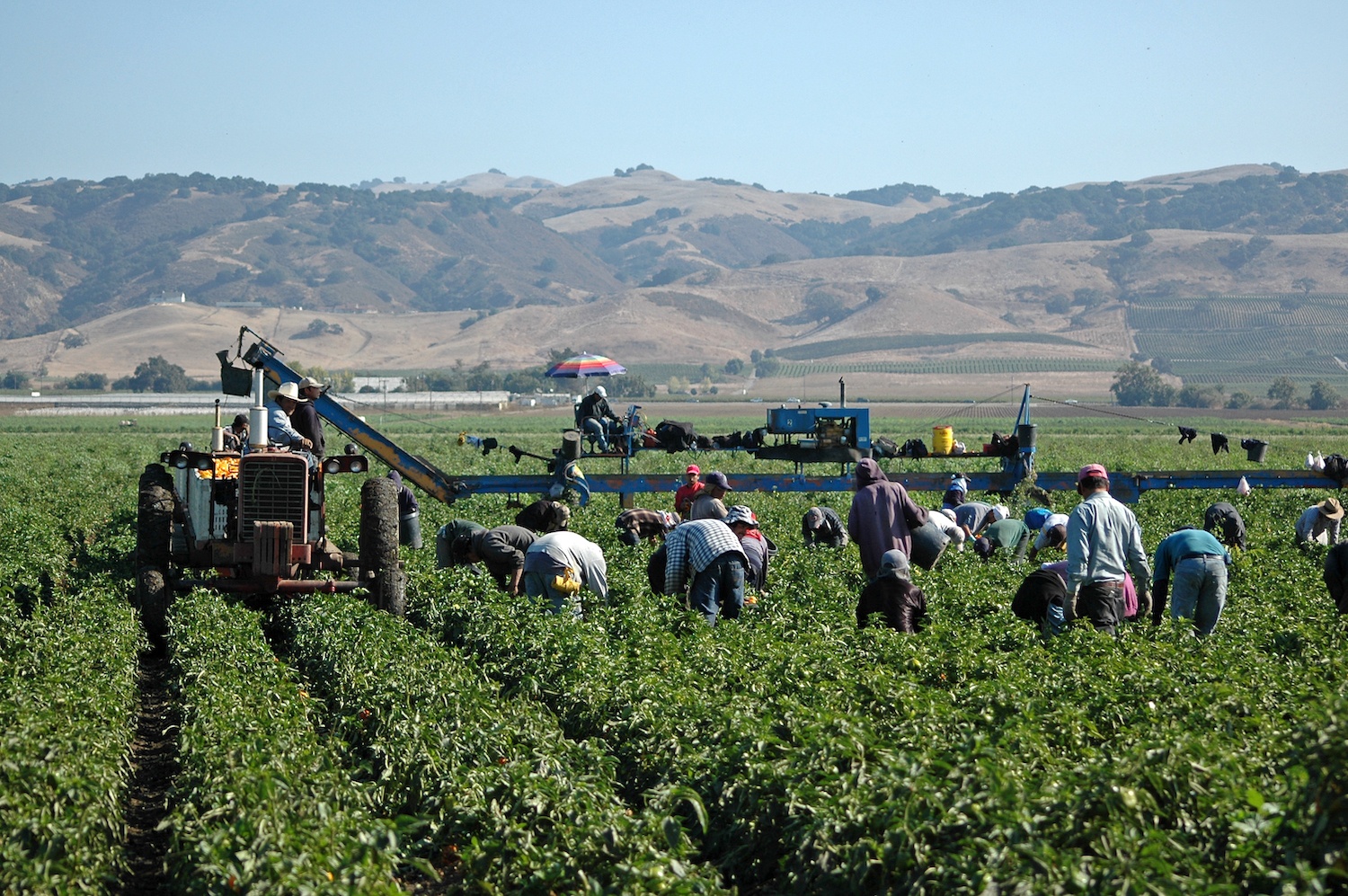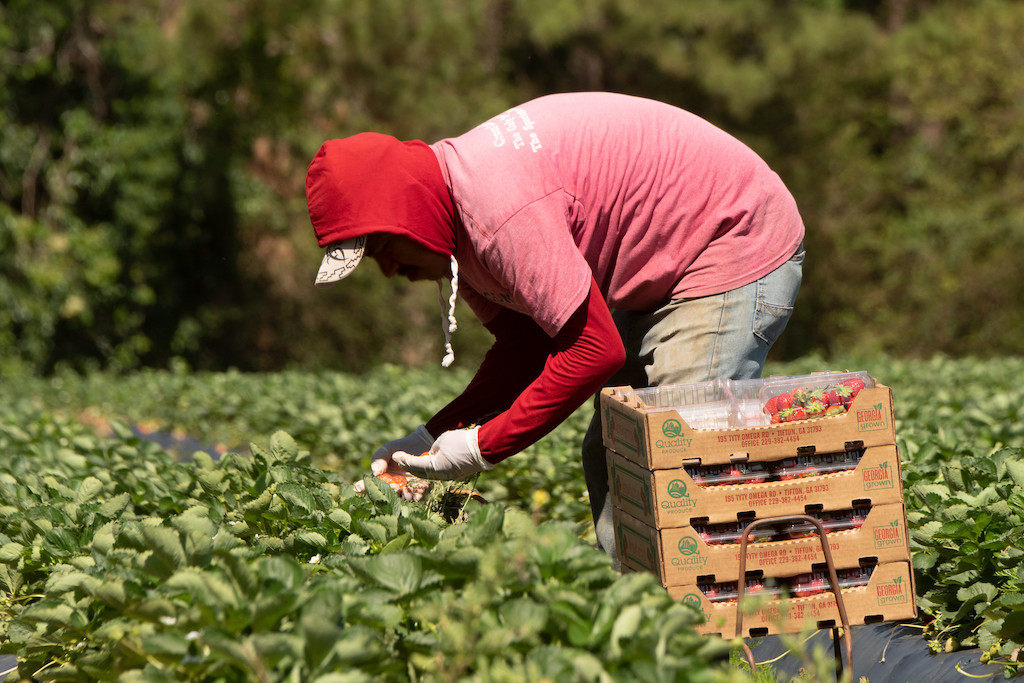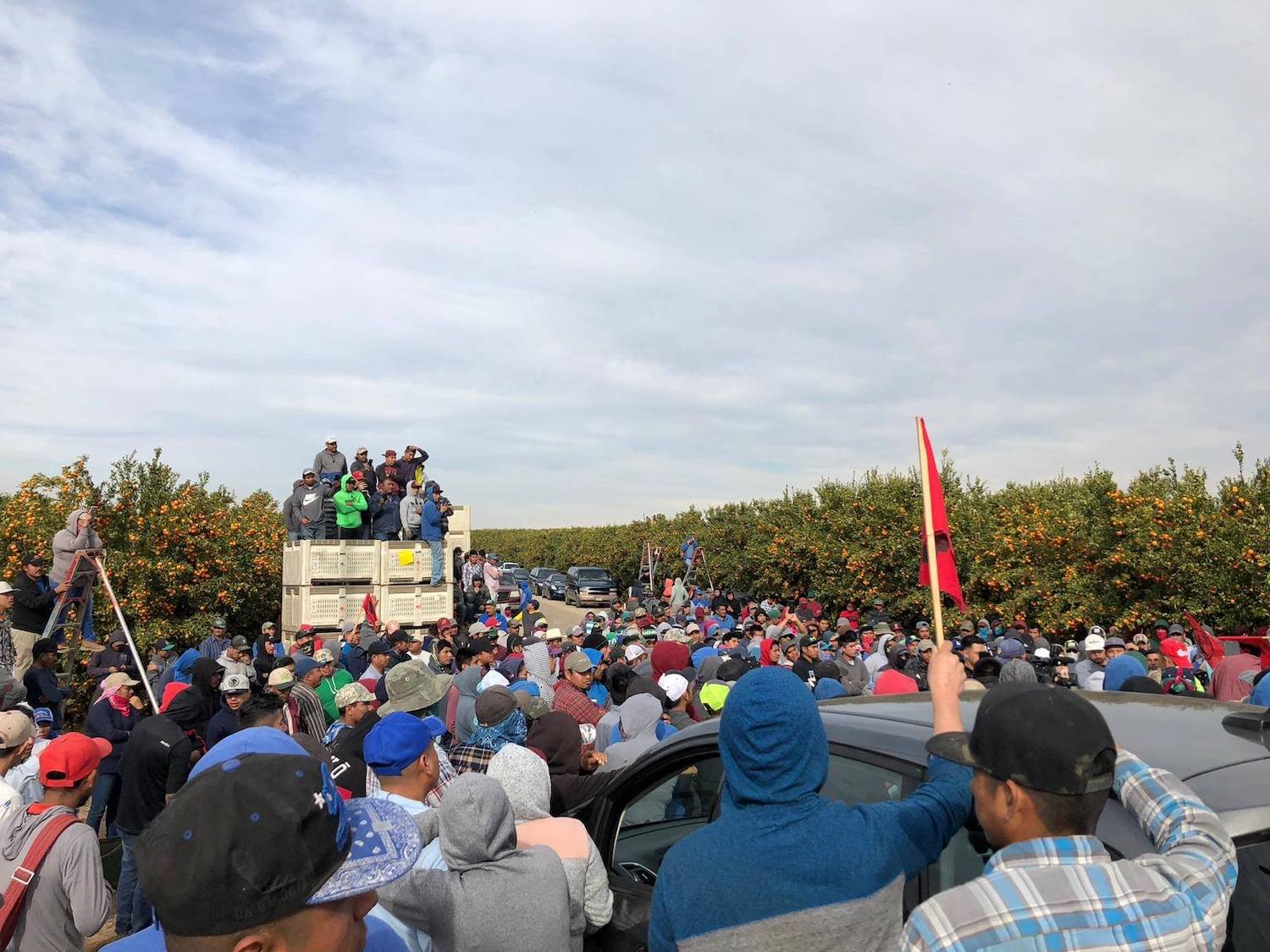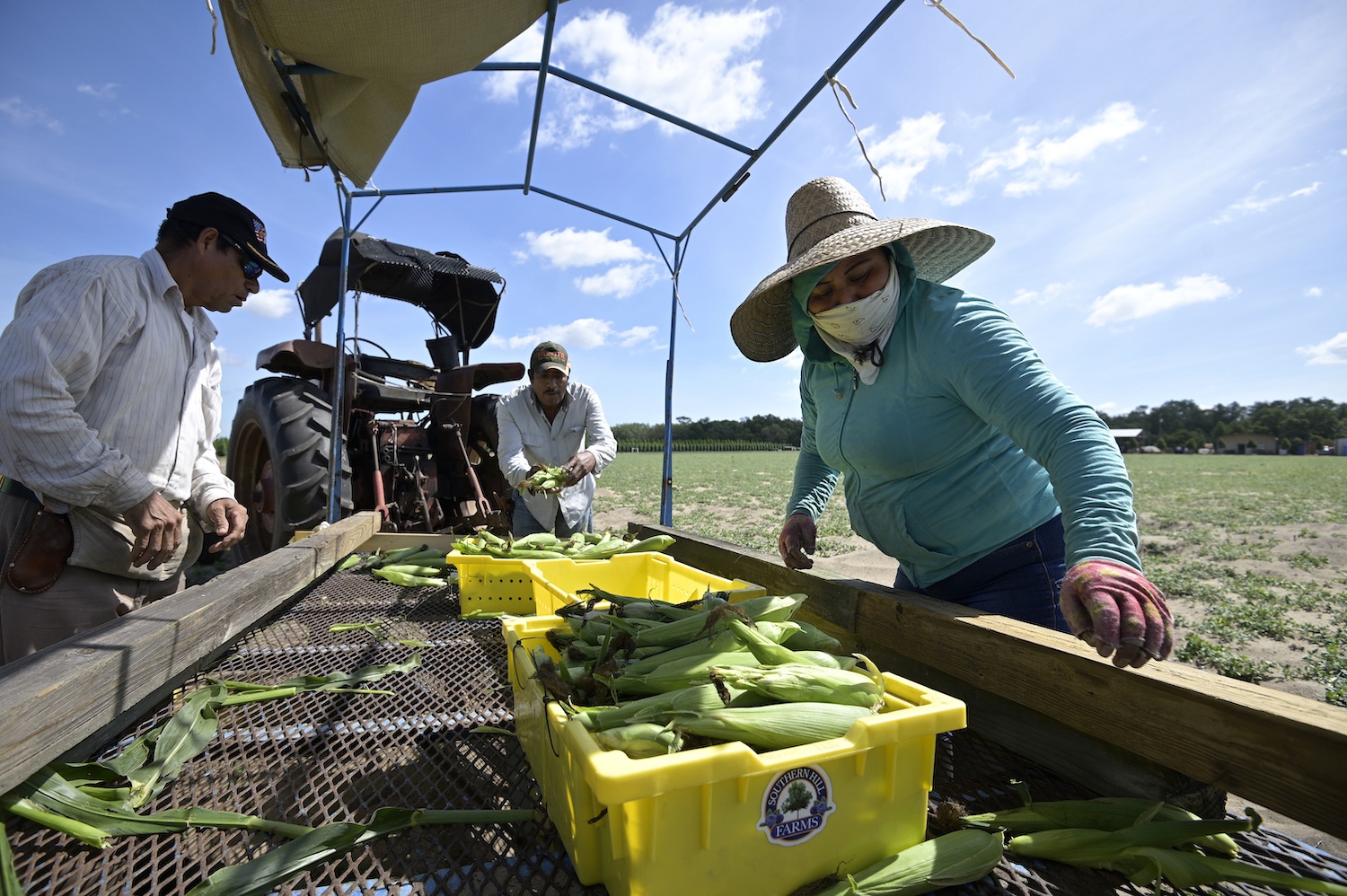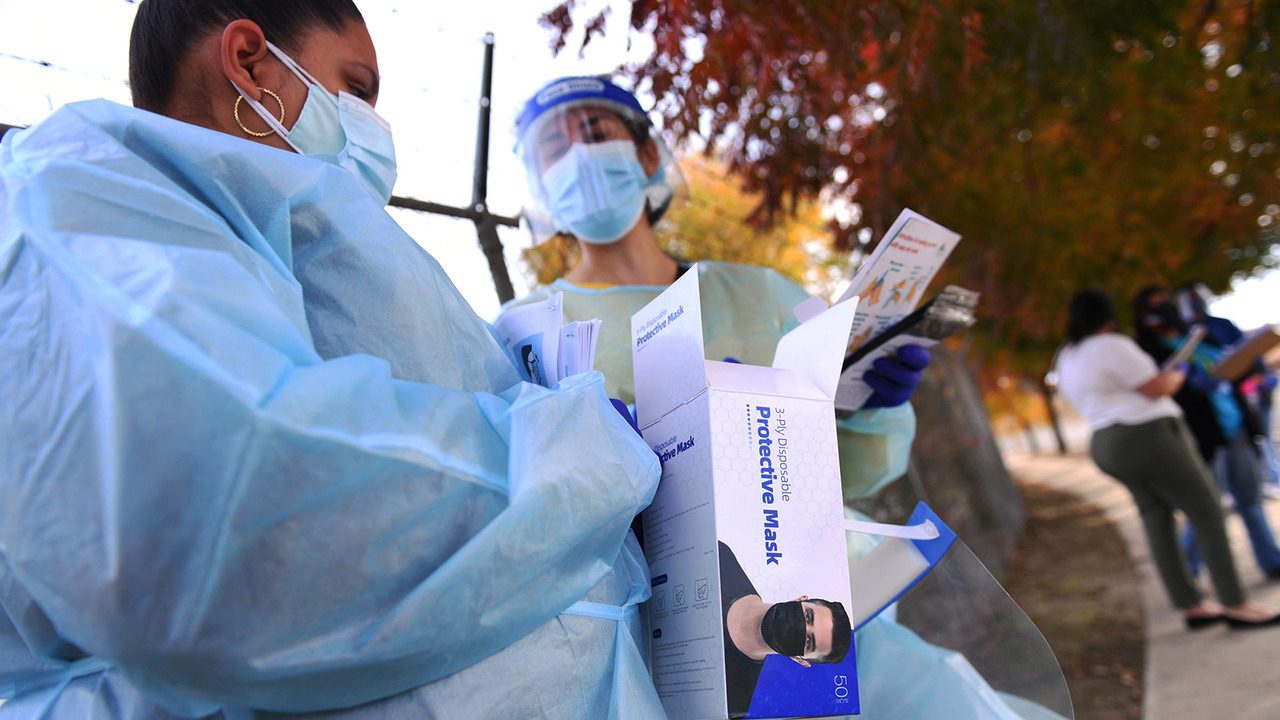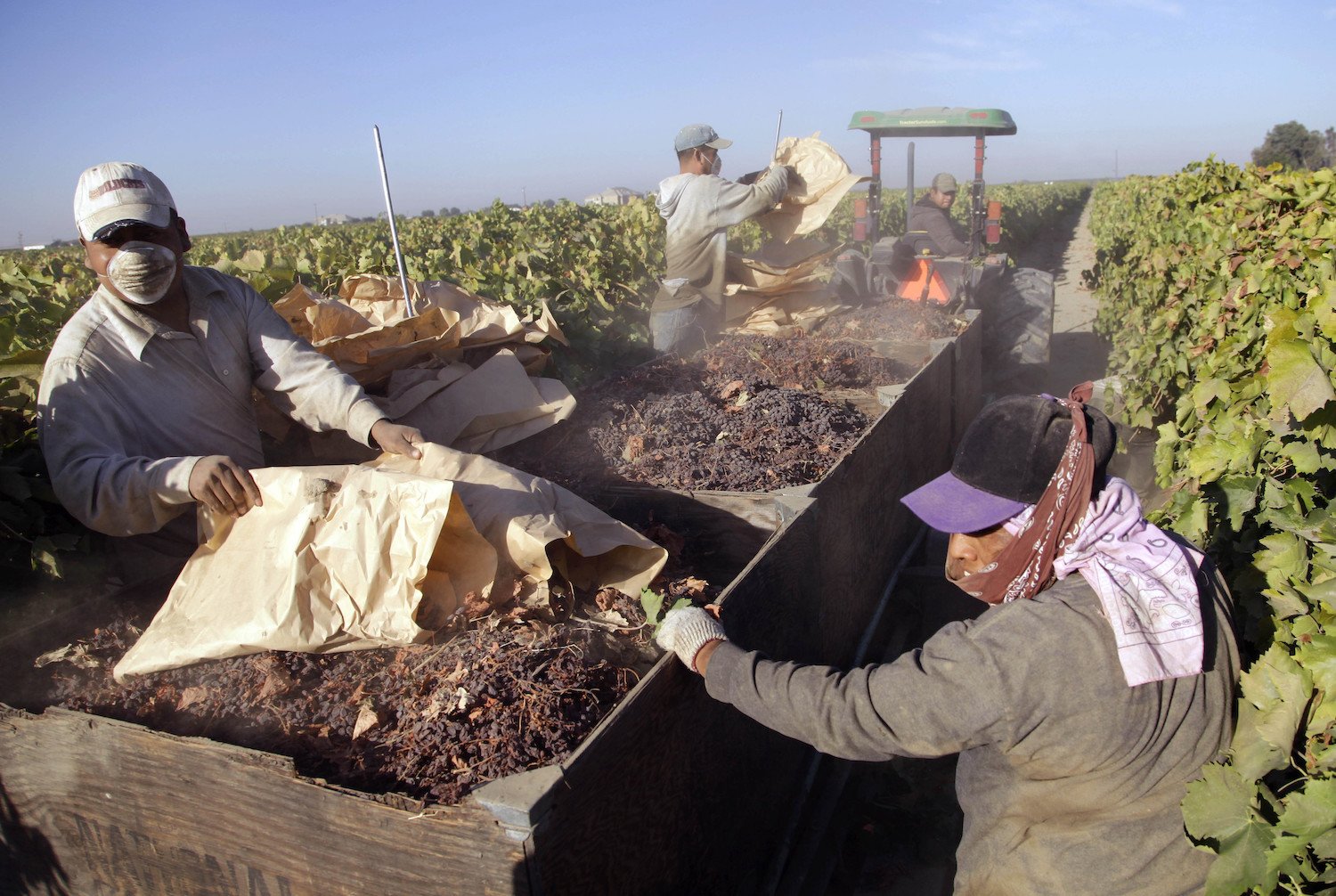But it’s not the farm owners who are the biggest scofflaws, a new report finds. It’s the middlemen.
Farm work is one of the toughest jobs in America. Crop pickers and field hands labor in potentially killer heat for low pay, usually without the benefit of health insurance. During the pandemic, the cramped conditions in dormitories and fields have made them especially susceptible to virus spread.
And now, a new report shows, their bosses are more likely to stiff them on wages. Between 2000 and 2019, the federal Department of Labor’s Wage and Hour Division (WHD) conducted more than 31,000 investigations of farm employers, and 70 percent of them detected violations, according to data analysis by the Economic Policy Institute, a left-leaning think tank. That led to employers coughing up $76 million in back wages to 154,000 farmworkers, and $63 million in civil penalties for violations related to inadequate housing, transportation, and record-keeping.
Overall, agriculture accounted for a disproportionate share of investigations and violations compared to the rest of American industry. The true number of farm workers is unknown, but the average number reported to state agencies is around 1.3 million people, or about 1 percent of total U.S. employment in 2019. But over the past 15 years, the sector accounted for 3 percent of the 10 million violations—triple the share of employment.
He compares workers employed in “crop support,” as the sector is officially called, to temps.
It wasn’t lettuce farmers, egg producers, or any traditional farm employer that was the most “egregious” violator, the authors say. It was farm labor contractors (FLCs), third-party staffing firms that find and supply field hands for farmers, growers, and producers. Even though they represent only 14 percent of sector-wide employment, FLCs accounted for nearly a quarter of overall federal wage and hour violations in agriculture.
Every year, these staffing firms bring around 181,000 subcontracted workers to farms, as part of a growing, decades-long trend in outsourcing farm labor, and cutting back on direct hires, says Phillip Martin, one of the study’s co-authors. He compares workers employed in “crop support,” as the sector is officially called, to temps.
As we’ve reported, FLCs are an attractive option for farm owners who may not have the expertise to recruit, hire, and manage workers in their fields. In addition, some owners may control vast acres that are too costly to staff for the entire year. In those instances, it’s advantageous to have contractors who can tap into community networks and pull together crews for harvests, either through word of mouth or Facebook.
“In theory, labor contracting should be advantageous to workers and to employers,” said Martin. “But in practice, it’s never worked out that way.”
Farm workers employed by FLCs, who represent around two-thirds of crop workers in California, tend to earn less than direct hires. For instance, contracted workers at Wonderful Citrus, one of America’s largest fruit companies, earned around $12 an hour, at piece rate. By comparison, their direct hires, who performed the same job, earned at least $15 an hour. Last year, those tensions boiled over into a strike.
“In theory, labor contracting should be advantageous to workers and to employers. But in practice, it’s never worked out that way.”
That downward pressure on wages comes from the growers, Martin says. “The farmers are pretty good at surveying themselves and determining what each other is paying, and in many cases, holding down the commissions that contractors receive,” he said. “And farm labor contractors have usually been unable to push back against farmers, and so they will accept a commission that’s low, and take it out on workers.”
That, in turn, can lead to wage theft. The contractors may hire workers that are more likely to be new arrivals who don’t know their rights, Martin says. Or they’re undocumented workers who may be afraid of contacting authorities.
Lupe Sandoval, executive director of the Farm Labor Contractor Association, a Sacramento-based trade association, says FLCs are no more guilty of wage theft than traditional farm employers. He points out that labor contractors in California abide by licensing and training requirements, and says the higher rates are because they’re “targeted” by state enforcement agencies.
“If they put the same amount of effort into investigating other industries, and other people, they’d find the same crap,” Sandoval said. “It’s a lot of politics.”
Not all contractors are bad guys. Martin and his co-authors found that a relative handful of “bad apples” account for the largest share of violations and back wages owed. Among FLCs, 5 percent of them accounted for 65 percent of violations, a figure that was similarly concentrated among traditional farm employers, too.
“Every time there’s a Democratic administration, the numbers of investigators slowly go up, and when there’s a Republican, they shoot back down.”
It should be noted that the number of farm labor violations has dropped to its lowest level in 15 years. There’s another explanation for the low rates, however, and it doesn’t have much to do with employers. At the federal level, funding for wage-and-hour investigations in all sectors has fallen, and farm probes are down from 2,000 a year in the early 2000s to 1,100 in 2019. In any sector, employers have only about a 1-percent chance of being investigated in a given year.
“It really bears repeating how important that funding is,” says Daniel Costa, one of the EPI report’s co-authors. He notes that the Department of Labor is down to 780 wage and hour investigators, an extremely small number for a labor market of at least 150 million people. “That’s a huge scandal, and something people should really be aware about,” he says.
Besides staffing up, the authors also call on the Labor Department to be more creative and expansive in who they’re charging with violations. In fast food, the question of who, exactly, is responsible for what happens to workers, and who’s on the hook for stolen wages, centers around the interpretation of a “joint employer.” At the moment, corporations like McDonald’s appear to be as responsible for workers as their franchise owners, but that’s not set in stone.
The authors say that farm investigators should be similarly broad in their interpretation, and fine both the growers and FLCs if there’s a violation. That way, they write, the blame can’t be shifted, and farm owners will “have incentives to police” their contractors. Otherwise, workers are at the mercy of elections.
“Every time there’s a Democratic administration, the numbers of investigators slowly go up, and when there’s a Republican, they shoot back down,” Costa adds. “It’s a constant back and forth.”
